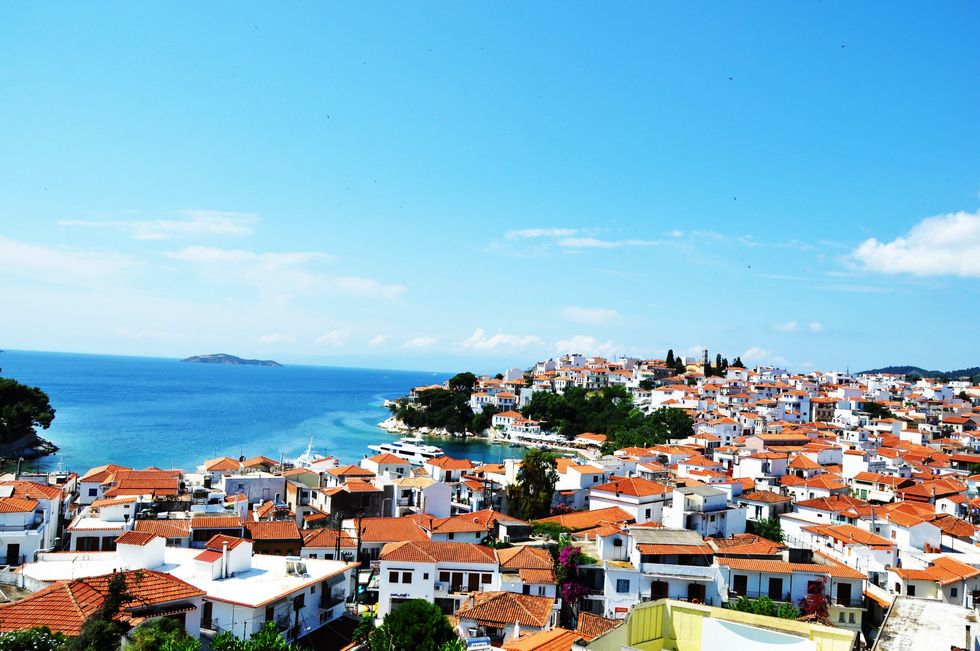Break down the phrase “the meaning of life.” Taken literally, it refers to the reason(s) why we do things. This brings to mind the psychological concept of drives, which are instinctual needs within us. Humans have hunger drives and sleep drives, both of which serve to regulate homeostasis in our bodies. We have other, non-regulating drives: sex drives, educative drives, safety drives, and social drives, all of which in some way promote survival and reproduction.
So why, for thousands of years, have humans so tirelessly created art, music, and literature? There seems to be a drive within us for creation of great works, as evidenced by the golden ages that have been proliferous throughout history. Art, music, and literature do not promote survival or reproduction. Some drive-based explanations for the arts include the existence of some unconscious aesthetic drive, that creating art is an extension of the natural drive to play and explore, or that this creation is a vicarious means of satisfying other drives, such as love, sex, and social success.
Marcel Proust, an early 20th century French novelist, has shared with us his theory on the meaning the life in the form of the longest novel ever written, "Á la recherché de temps perdu", translated as "In Search of Lost Time". Its simple answer to the meaning of life, and thus how we can reinvigorate ourselves when life seems dull and boring, will provide new color and excitement to your life.
In Search of Long Time" was published as a series of seven volumes over fourteen years in Paris. It is the story of a man, based on Proust himself, who embarks on a search for the meaning of life. He is “searching for lost time”. This narrator remains unnamed throughout all seven volumes, presumably because Proust wrote this novel to help us, and we are meant to be able to put ourselves in the narrator’s place. The Narrator systematically investigates three possible sources of the meaning of life.
First is social success, which in Proust’s time meant joining high society and the aristocratic circles. The narrator, erudite and witty, is quickly accepted into these circles, but eventually realizes that these people are just as vapid, damaged, and boring as people of any other social status. Both virtues and vices, he finds, can be found among all people, and the “perfect people” are not in existence anywhere. He wasn’t missing out on anything.
Next, the Narrator investigates love. He takes a vacation with his grandmother to a seaside resort island, and there develops a passionate crush on a teenage girl called Albertine. The Narrator grows obsessed and comes to the conclusion that the meaning of life must lie in love. Yet again he is disappointed. He finally gets the chance to kiss Albertine, but the kiss is uneventful and flat. He and Albertine do not click in the way he had imagined, and The Narrator comes to yet another bleak realization. Though we hope there is someone out there whom with we can fuse our lives and feel less alone, we’re all more or less never going to be completely understood by another person. We’re all in the dark.
This leaves one last possible source: art. Here is where Proust’s novel takes a lighthearted and hopeful turn. Proust believed that familiarity, or habit, blinds our eyes and strips away our appreciation of the world. For example, say you buy a new delicious blend of coffee. The first few mornings, you wake up excited and looking forward to your cup, so much so that work or school doesn’t seem so bad. Eventually, though, the happiness this coffee once brought loses its novelty because you’ve become familiar with it.
Children do not suffer from habit. This is why they’re excited by everything, especially things that seem trivial or meaningless: brownie batter, a new pencil, rain puddles, ladybugs crawling on their hands, the first snow. Adults lose this childlike wonder due to habit, and seek ever more powerful stimulants like money and success, and are never quite fulfilled.
Proust says we must strip away the mask of habit and start to see and feel the world with a new, childlike wonder. A group of people who do this expertly are artists. They show us the world in novel and different ways; they make us look at things twice. Through their eyes we see the world with a new sensitivity: mundane things like plants, people, and rooms are made lively by Monet’s water lillies, Vermeer’s milkmaid, and Matisse’s red room.
Proust does not necessitate making art or going to museums; instead, he hopes that we will look at and feel the world in the same way that an artist does. We should take pleasure in simple things and notice them, and make sure we do not fall into habit. So, go lick the brownie batter off a spoon, stomp around in the rain, or rediscover an old favorite book. According to Proust, you will be feeling the meaning of life.
















